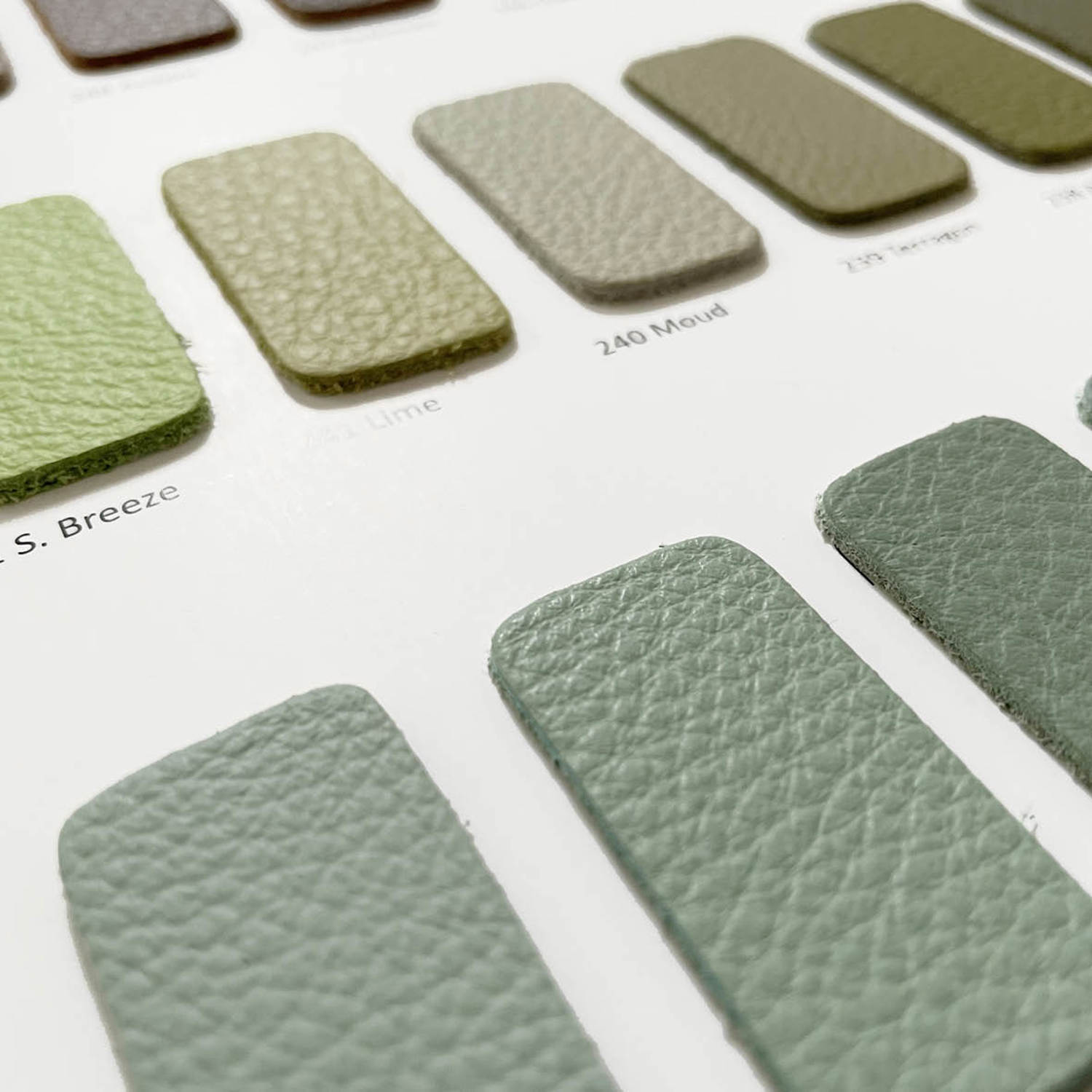What are the most common types of natural leather?

Various types of natural leather are suitable for furniture and interior upholstery and reupholstery.
Aniline leather
Aniline dyes, the pigments of which do not bind, are added to the hides in special tanks giving the hides a transparent appearance. Any blemishes on the leather remain visible, which means that only the best quality and most attractive hides (of European origin) can be used for this type of leather. It produces the best results in terms of softness and flexibility, which makes it more comfortable and gives it a more exclusive appeal. Although the leather has a very natural feel, its light fastness is generally poor. There is also a risk of dirt being embedded in the grain. Aniline is always a full grain type of leather.
Semi-aniline leather
Semi-aniline leather is made of full grain hides. Once the aniline dye has been applied, additional pigmented colour lacquers are sprayed onto the hide, or a blank protective layer is added. The grain remains visible, but small blemishes tend to disappear and the hide is more resistant to dirt. The result is soft, flexible leather that is wear resistant.
Corrected grain leather (pigmented or lacquered)
The hides are coated in a layer of pigment, which seals the grain completely. The colour pigments bond and the grain disappears. In order to correct defects in the top layer, it is often polished and an artificial pattern applied. Coated leather is practical in use and has a high degree of light fastness, but it is less pliable and less breathable.
Wisch leather
Wisch leather is corrected grain leather consisting of 2 colours, a very light base colour with a very dark colour sprayed on top. A solvent is used to remove some of the top layer to allow the base layer to shine through. This type of leather is often used for vintage furniture.
Nubuck
Aniline hides are abraded on the grain side with very fine sandpaper. This gives the top layer a lighter colour than the deeper sections. If the hide has first been compressed on a print plate, a specific motif can be created this way. This type of leather is very sensitive to dirt and generally has a low level of light fastness.
Suede A chrome tanned and aniline dyed leather, the underside of which is sanded and then used as the top layer. This type of leather is sensitive to compression.
Split leather
During the initial processing phase the cattle hides are separated into layers. The bottom layer is referred to as ‘the split’. The upper side of the hide is similar to the underside of grained leather. A pigment layer is applied to the hide to fully close the grain. An artificial layer embossed with a leather grain is then applied using a roller. This type of hide has to be thicker to give it sufficient strength, but these factors also make it less pliable. Because it is difficult to process the edges the hides need to be trimmed, resulting in sizes of 4 m² or less.
How should you judge natural leather?
Furniture upholsterers will confirm that natural leather is often identified by slight imperfections, which make it an authentic furnishing fabric for upholstery and reupholstery purposes. Farmers don’t keep cattle for their hides. They are only interested in milk or meat. Throughout their lifetime cows frequently damage their skin. After all, there’s a lot of barbed wire, which can cause deep cuts, in Western Europe. In North and South America branding is common practice and in Africa cattle are exposed to insect bites and skin diseases. These imperfections often lead to, usually unfounded, complaints. They actually create an irregular end product, which makes real leather stand out from artificial leather. Each part of the hide has its own structure and lesions, neck folds and scars are an inherent part of a natural product. A fault only occurs when the top layer is split.



